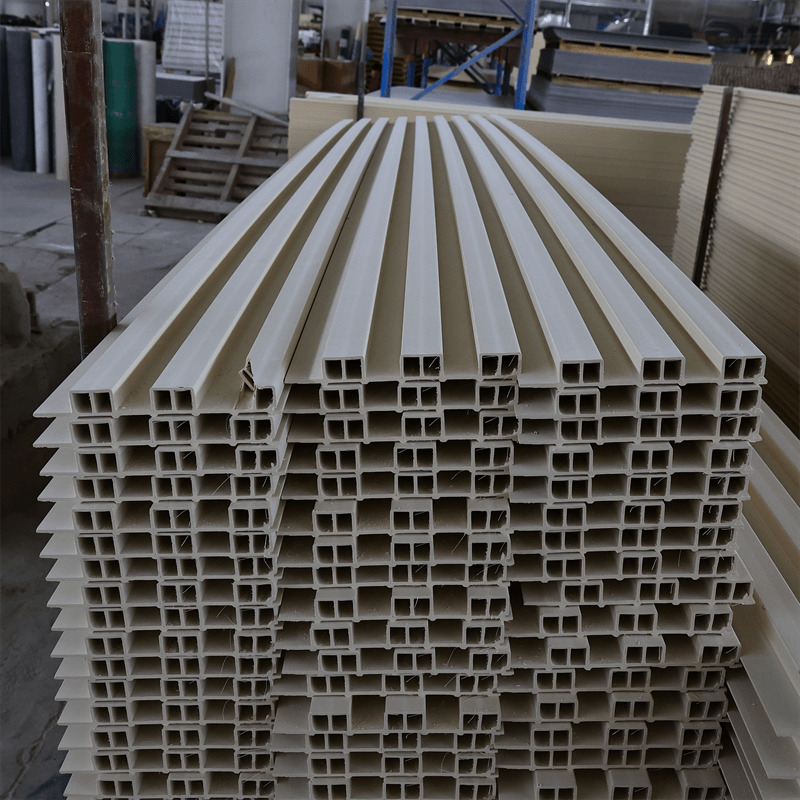Interior design is a powerful tool that can transform any space into a visually appealing and harmonious environment.
When it comes to wall coverings, WPC (Wood-Plastic Composite) wall panels have gained immense popularity in recent years.
These panels offer a unique blend of aesthetic appeal, durability, and sustainability, making them an ideal choice for enhancing interior design.
In this essay, we will explore the benefits and features of WPC wall panels, their impact on interior design, and how they contribute to creating aesthetically pleasing spaces.
The Versatility of WPC Wall Panels
WPC wall panels are available in a wide range of designs, colors, and textures, making them versatile for various interior design styles.
Whether you prefer a sleek and modern look or a rustic and natural ambiance, WPC panels can be tailored to suit your aesthetic preferences.
The panels can mimic the appearance of wood, stone, or other materials, offering endless possibilities for creating captivating interior spaces.
Furthermore, WPC wall panels can be easily customized in terms of size and shape, allowing for innovative design solutions.
They can be installed vertically, horizontally, or even diagonally, adding visual interest and creating focal points within a room.
With their versatility, WPC wall panels provide interior designers and homeowners with the freedom to experiment and create unique designs that reflect their personal style.
Enhanced Durability and Longevity
One of the key advantages of WPC wall panels is their exceptional durability and longevity.
Unlike traditional wall coverings such as paint or wallpaper, WPC panels are resistant to wear, fading, and damage from moisture or sunlight.
The combination of wood fibers and plastic in WPC panels creates a material that is highly resistant to warping, cracking, and rotting, ensuring their longevity in interior spaces.
Additionally, WPC wall panels are easy to maintain, requiring minimal effort to keep them looking pristine.
They can be cleaned with a mild detergent and water, and they do not require regular repainting or reapplication of wallpaper adhesive.
The low maintenance requirements of WPC panels make them an attractive option for busy homeowners and commercial spaces where upkeep time and costs are a concern.
Sustainable and Eco-Friendly Choice
In an era where sustainability is of paramount importance, WPC wall panels offer a compelling eco-friendly alternative to traditional wall coverings.
These panels are primarily made from recycled wood fibers and recycled plastic materials, reducing the demand for virgin resources and diverting waste from landfills.
By choosing WPC wall panels, interior designers and homeowners contribute to the conservation of natural resources and help reduce their carbon footprint.
Furthermore, WPC panels are free from harmful chemicals such as formaldehyde and volatile organic compounds (VOCs) that are commonly found in some paints and adhesives.
This makes them a healthier choice for indoor environments, promoting better air quality and reducing the risk of respiratory issues.
The sustainability and eco-friendly features of WPC wall panels align with the growing global focus on sustainable design and responsible material choices.
Impact on Interior Design Aesthetics
The use of WPC wall panels has a significant impact on the aesthetics of interior design.
These panels add depth, texture, and visual interest to walls, instantly elevating the overall appearance of a space.
With their wide range of design options, WPC panels can be seamlessly integrated into various design themes, whether it’s a contemporary office, a cozy residential living room, or a luxurious hotel lobby.
The natural appearance and textures of WPC panels provide a warm and inviting feel to any interior.
They can create a sense of harmony and connection with nature, especially when the panels mimic the look of real wood.
The introduction of WPC wall panels can transform a plain and monotonous wall into a stunning focal point, capturing attention and leaving a lasting impression on visitors.
Moreover, WPC panels offer practical benefits in interior design. They can be installed with integrated insulation, enhancing the energy efficiency of a space by providing better thermal insulation.
This not only contributes to cost savings in terms of heating and cooling but also improves the overall comfort of the occupants.

WPC wall panels have revolutionized the way interior designers approach wall coverings.
With their versatility, durability, sustainability, and aesthetic appeal, these panels have become a popular choice for enhancing interior design.
From their versatility in design options to their long-lasting performance, WPC panels offer a wide range of benefits that contribute to creating aesthetically pleasing and functional spaces.
As the demand for sustainable design and eco-friendly materials continues to rise, WPC wall panels provide a responsible choice that aligns with these principles.
By incorporating WPC panels into interior design projects, designers can achieve striking visual effects, add character to spaces, and create environments that are not only aesthetically pleasing but also durable and environmentally conscious.
Whether it’s a residential, commercial, or hospitality project, WPC wall panels are a valuable tool for transforming interiors and creating captivating spaces that leave a lasting impression.


